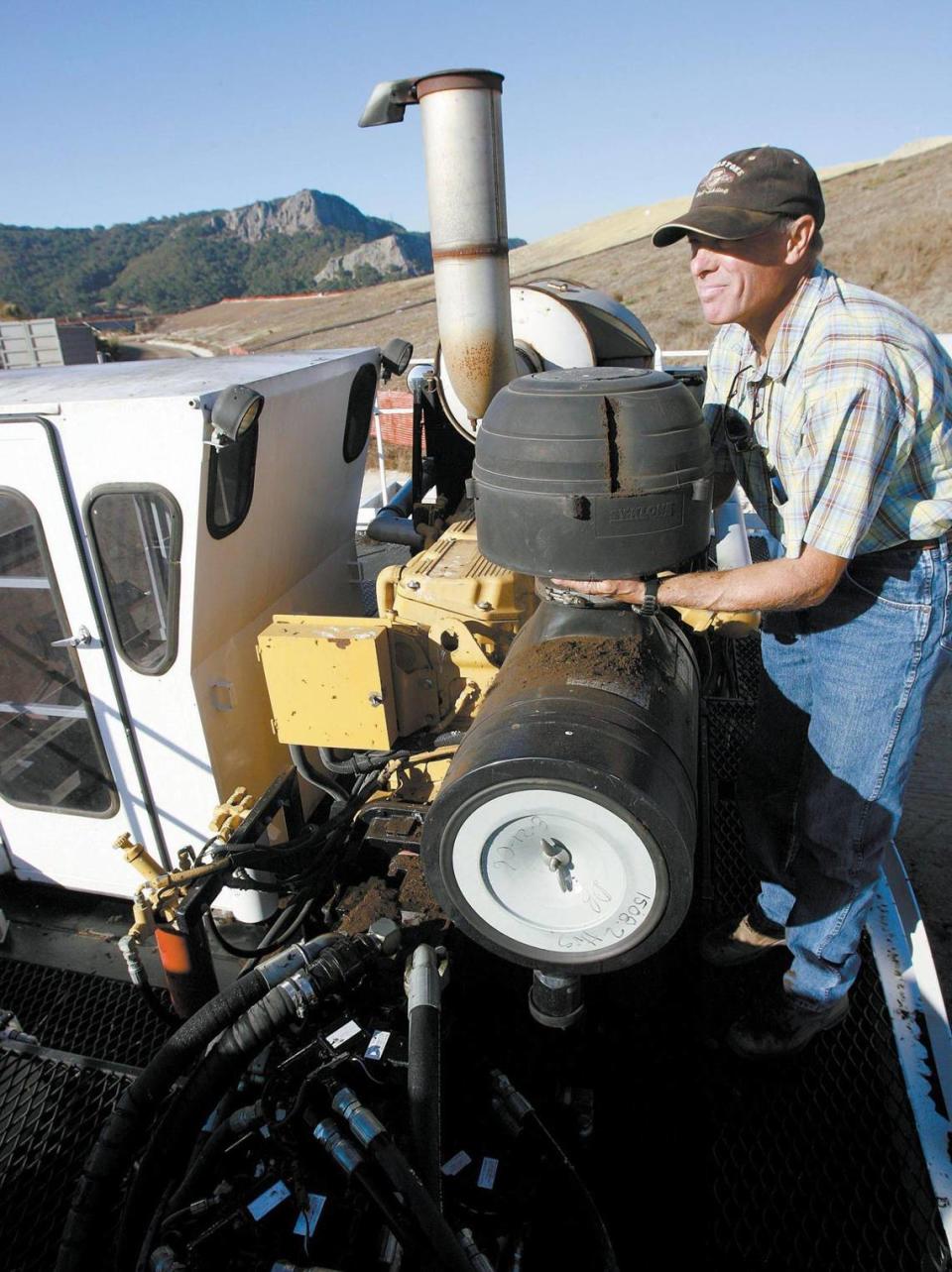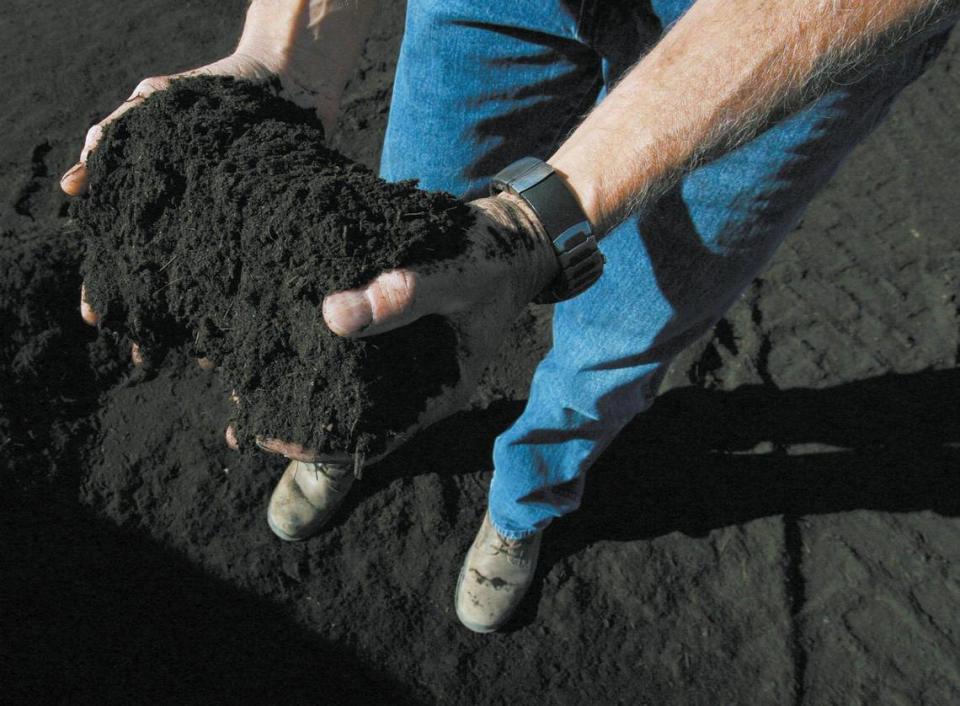From trash-eating hogs to biogas: How SLO County stayed on ‘the cutting edge’ of composting
Turning trash into treasure.
Did you know hogs used to feed on garbage at the dump near Edna? And that at one point, more than 100 of them were stolen?
The Telegram-Tribune reported March 8, 1955: “The largest hog-stealing operation in the history of the county was believed solved today.” Seven people were implicated in the theft of 106 hogs, a few at a time over a period of months.
There were fewer worries about toxic substances in the garbage stream then, and the agricultural county had a hard-scrabble tradition of making the most of limited resources.
Today, green waste that at one point was fodder for hogs is turned into biogas, which generates electric power.
It makes more money than running hogs through the garbage, and a byproduct of the anaerobic process is compost.
The region’s early efforts at composting were less sophisticated, and because it did not capture the methane, composting generated a smell that neighbors complained about. This lead eventually to the Kompogas® San Luis Obispo LLC facility now operating near the airport.
The Tribune reported on the region’s early composting efforts in a recurring business page column that was titled: “Work Spaces, an introduction to unique working environments in the county.”
This story was written by Melanie Cleveland and published on Nov. 21, 2006:
Creating Gardeners’ Gold

Bruce Rizzoli’s family has hauled garbage for three generations. His grandfather, a Swiss-Italian immigrant, picked up San Luis Obispo city trash with a horse-drawn wagon. His father later helped the fledgling business grow into San Luis Garbage, a company that sold to Waste Connections Inc., a 22-state conglomerate, in 2002 for $70 million.
Today, Rizzoli is keeping the family legacy alive, supervising the San Luis Obispo County operations at the 121-acre Cold Canyon Landfill in Edna Valley.
One of the projects Rizzoli helped to develop is the landfill’s compost operation. In its first year in operation in 1997, the recycling center brought in 4,000 tons of green waste from the city of San Luis Obispo. Now, it collects over eight times that amount — 34,000 tons — throughout the county, from Cambria to the Nipomo Mesa.
What you see: A white skein of fog fades in the early morning sunlight as dump trucks steadily drop piles of green and brown brush at the 15-acre compost center adjacent to the Cold Canyon Landfill. Hundreds of gray and white seagulls gather on a nearby recycling warehouse, watching as the red claw of a huge grinding machine — the size of a mobile home — drops the green waste into its tub, churning the cumbersome pieces into smaller, more workable bits of stems and leaves.
The precomposted material is then neatly shoveled into 18, long brown rows waiting across the lane. At first, the rows are piled about 18 feet wide and 7 feet high. In about four months, the piles will shrink to half that size, ready to be screened, bagged and sold as rich compost to landscaping companies and agricultural wholesalers.
Rizzoli’s job this morning is to drive the landfill’s industrial-sized Scarab composter over these rows — at a crawl of about 3 mph. Clouds of steam obscure the machine as the turned compost hits the cool morning air.
“The bottom of the pile is about 140 degrees,” he said, “I heard a guy once cooked his Thanksgiving turkey in a compost pile. It took him about three days. Don’t know if he ate it or not.”
What he sees: Rizzoli explains the process as an efficient way to use waste that would otherwise take up valuable space in the landfill.
“Every day, the trucks keep coming with stuff. It’s like a running faucet that never stops,” he said. “Composting diverts green waste and at the same time we also stay ahead (with positive cash flow), so it’s a win-win for everybody involved.”

What he likes best: “Making a good, organic, reusable, beneficial product out of what otherwise would be discarded material,” he said.
What he would change: Rizzoli wishes people would do a better job separating other trash from their green waste. At this point, they have to hire people to pick out unwanted debris, which costs the operation an extra $52,000 a year.
He would also like to find more ways to recycle waste. Otherwise, the current landfill will run out of space within six years, Rizzoli said.
“The next thing will be for us to compost kitchen scraps — food waste — but that requires a whole different process and permitting issue,” he said. “We’d have to put in concrete pads and such, because it would be a lot more odorous. That’ll take probably four or five years.”
On the whole, Rizzoli is happy with diversion efforts in the county.
“We’re efficient, and it’s an economical, cost-effective process,” Rizzoli said. “Hopefully, we’ll keep on the cutting edge of things.”

